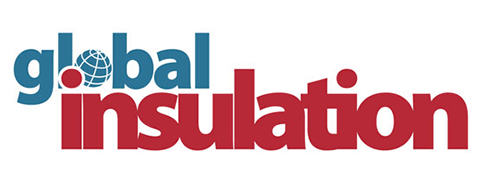Insulation industry news from Global Insulation
Search Insulation News
Panasonic to recycle glass in old TVs to mass-produce heat insulators
Written by Global Insulation staff
14 October 2011
Japan: Panasonic Corp has announced that it will begin to mass-produce heat insulation materials by recycling glass used in cathode-ray tube television sets.
To this end, Panasonic has built within the premises of its 'white goods' plant in Kusatsu, Shiga Prefecture, a facility to melt glass tubes used in the TV sets and turn them into fiberglass insulation. Production is slated to begin in February 2012, the company said.
Panasonic estimates heat insulation for about 300,000 refrigerators can be produced from some 130,000 glass tubes. Besides refrigerators and other home appliances, the insulating material can be used for houses and cold containers, company officials said.
Panasonic has been selling part of glass retrieved from cathode-ray tube television sets at its recycle plant to glass-makers in and outside Japan. But the company decided to recycle the glass on its own because its inventory had piled up.
OJSC Balakovorezinotekhnika returns to profit
Written by Global Insulation staff
12 October 2011
Russia: The net 2011 first-half profit of OJSC Balakovorezinotekhnika, which makes a number of plastic-derived technical goods including vibration-dampening insulation and pipe-lagging was USD2.3m against a loss of USD3.52m for the same period of 2010. Its revenue increased by 43% to USD98.4m from USD68.8m and its profit due to sales was USD1.77m against a sales loss of USD1.96m in the first half of 2010.
New Kazakh mineral wool plant
Written by Global Insulation staff
05 October 2011
Kazakhstan: A new Vodokanalstroy Company mineral wool plant has started operation in the city of Karaganda in Karaganda region as part of the Business Roadmap-2020 programme.
The executive director of the company, Mikhail Lashkov, said, "The project cost USD11.2m. The sources of financing were our own funds, accounting for USD7.6m and a loan of USD3.7m borrowed at an interest rate of 7%/yr."
According to Lashkov, the production capacity of the plant is 85,000m3/yr of thermal insulation material. "The main product of the plant are mineral wool slabs with Misot synthetic binding agent," he added. The raw materials for the products are sourced from ArcelorMittal Temirtau.
"There is a huge demand for heat insulation materials in Kazakhstan and 85% of such products are imported. Now the imports can be reduced," said Lashkov.
New Zealand insulation company goes into liquidation
Written by Global Insulation staff
29 September 2011
New Zealand: EnergySmart, a major partner in the New Zealand government's home insulation scheme, has been placed into liquidation. The company owes a reported USD780,000 in outstanding unpaid invoices.
EnergySmart has offices across New Zealand and is one of the Warm Up New Zealand scheme's larger providers, having carried out 5% of 115,000 home insulation retrofits across the country since the scheme began in 2009. The company's turnover in 2009-10 was USD11m, but it made a loss of USD590,000. Mike Underhill, chief executive of the Energy Efficiency and Conservation Authority, which runs the USD270m scheme, said he was 'appalled'.
EnergySmart was sold by its founders, Peter and Robyn McKeown, for USD390,000 in 2006. After trying to attract a commercial buyer, the company was acquired by the Hutt-Mana Charitable Trust, who injected USD590,000 in 2009.
China announces HCFC reduction cash
Written by Global Insulation staff
21 September 2011
China: China is to allot USD265m to eliminate the use of hydrochlorofluorocarbons (HCFCs) according to a Ministry of Environmental Protection announcement. The country is the world's largest producer and consumer of the ozone-layer destroying chemicals, which are still routinely used in the developing world for a variety of uses, including thermal insulation materials.
As a developing country, by 1 January 2013 China is required to keep the production and use of HCFCs at a level equal to the average amount seen in 2009 and 2010. By 2015, the amount should be reduced to 90% of that seen in 2013. By 2030 their routine use should be given-up entirely, save for specific limited purposes such as maintenance.




